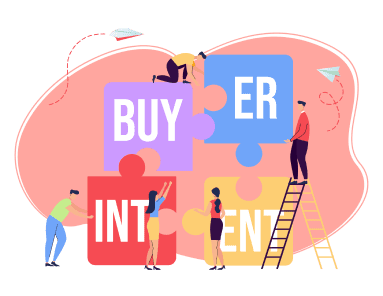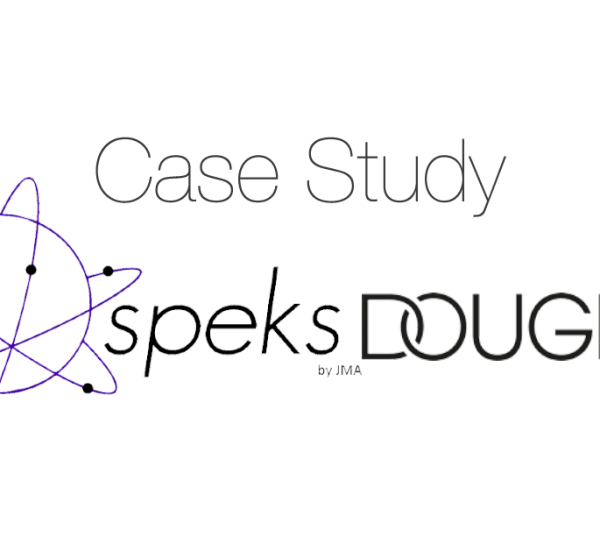Table of Contents
The Secret to Faster, Smoother Tech Delivery: Agile Methodology
Projects constantly late and over budget? Here’s how we cut delivery times by 40%.
How many times have you been promised a new software feature, only to have it arrive months (or even years!) behind schedule, riddled with bugs, and completely missing the mark of what you actually needed? Countless times. At one point I was convinced “on-time delivery” was just a myth tech companies told to trick us. And it’s usually not due to a lack of effort; it’s often a symptom of broken processes.
Then, I encountered Agile. It’s not just buzz; it’s a fundamental shift in how we approach software development. I’m not talking about doing Agile, I’m talking about being Agile.
Last year, a McKinsey study found that Agile organizations are 60% more likely to see revenue growth and 30% more likely to have higher customer satisfaction. Those are some serious numbers. But the real question is: Can Agile really solve the chaos? Can it truly transform the way we deliver technology?
Here’s what I learned on my journey – and how you can apply it to YOUR projects.
1. The Breaking Point: Drowning in Waterfalls 🌊
Early in my career, I worked on a project that was the textbook definition of “Waterfall.” We spent months gathering requirements, meticulously documenting every single detail in a massive spec document. Think hundreds of pages, flowcharts that looked like spaghetti, and enough Gantt charts to wallpaper an entire office.
The result? After a year of development, what we delivered was nothing close to what the customer needed. By then, the market had shifted, the requirements were outdated, and the technology was almost obsolete. It was a painful, expensive, and ultimately useless exercise. We spent countless hours building something nobody wanted.
That’s when I started questioning everything. There HAD to be a better way than spending a year in a dark room meticulously building against a spec someone thought was right 12 months ago. The slow feedback cycles meant we were building on assumptions that were probably wrong by the time we were done.
This project wasn’t an anomaly, either. It was the rule. The industry was suffering from waterfall’s rigidity. It’s like trying to carve a statue in granite based on a blurry photo – a recipe for disaster!
2. What Everyone Gets Wrong: Agile Is Not Just Sprints 🏃♀️
Here’s the biggest misconception about Agile: It’s often conflated with Scrum, Kanban, or some other specific framework. These are tools, but Agile is the overarching philosophy. It’s a mindset focused on:
- Collaboration: Breaking down silos and fostering communication between developers, designers, product owners, and stakeholders.
- Continuous Feedback: Regularly incorporating feedback from users and stakeholders throughout the development process.
- Adaptability: Embracing change and being willing to pivot based on new information and market conditions.
- Iterative Development: Building and delivering small, functional increments of the product, rather than waiting until everything is “perfect.”
Many teams just end up going through the motions, attending daily standups and calling themselves “Agile” without truly embracing the underlying principles. They might implement Scrum rigidly, without adapting it to their specific context.
💡 Pro Tip: Don’t confuse doing Agile with being Agile. It’s a mindset, not a checklist.
They miss the point entirely and then blame Agile when things still go wrong. It’s like buying a fancy set of cooking knives but still ordering takeout every night. The knives are just tools.
3. The Lightbulb Moment: Embrace the Chaos 💪
My “aha!” moment came when I realized that unpredictable changes weren’t a problem to be avoided: they were a constant. Instead of fighting change, we had to learn to embrace it.
We started by focusing on delivering value in small increments. We broke down our larger projects into smaller, more manageable stories that could be completed in a single sprint. This allowed us to get early feedback from users and make adjustments along the way.
Instead of spending months building a complete feature that might miss the mark, we could deliver a minimum viable product (MVP) in a few weeks and then iterate based on user feedback. This dramatically reduced the risk of building something nobody wanted and allowed us to adapt quickly to changing market conditions.
Suddenly, we weren’t fighting the chaos; we were surfing it. 🏄 This shift in mindset transformed our team from a group of stressed-out perfectionists to a highly adaptable and responsive unit.
4. Hands-On Implementation: From Theory to Practice 🛠️
Now, let’s get practical. Here’s a simplified model to help implement Agile principles. I’m intentionally avoiding specific frameworks like Scrum or Kanban so we can focus on the core principles.
A. Requirements Gathering & Prioritization:
User Stories: Instead of spec documents, we write user stories. A user story is a concise description of a feature from the user’s perspective. Example: “As a user, I want to be able to filter search results by price so I can find products within my budget.”
Product Backlog: We maintain a prioritized product backlog, which is a list of all the features, bug fixes, and other tasks the team needs to address. The product owner is responsible for prioritizing the backlog based on business value and user needs.
Estimation: We use techniques like story points or t-shirt sizing to estimate the effort required for each story. This helps us plan our work and track our progress.
B. Development & Testing:
Short Iterations: We work in short iterations, typically 1-2 weeks long. Each iteration focuses on delivering a small, functional increment of the product.
Daily Stand-Ups: We hold daily stand-up meetings where team members discuss what they worked on yesterday, what they plan to work on today, and any impediments they are facing.
Continuous Integration: We use continuous integration to automatically build, test, and deploy our code whenever changes are made. This helps us catch bugs early and ensure that our code is always in a working state.
Automated Testing: We write automated tests to verify the functionality of our code. This helps us to detect regressions and ensure that our code continues to work as expected.
Here’s an example of a simple Python function and its corresponding test using pytest:
# function.py
def calculate_discount(price, discount_percentage):
"""Calculates the discounted price."""
if not (0 <= discount_percentage <= 100):
raise ValueError("Discount percentage must be between 0 and 100")
discount_amount = price * (discount_percentage / 100)
return price - discount_amount
# test_function.py
import pytest
from function import calculate_discount
def test_calculate_discount_valid():
assert calculate_discount(100, 10) == 90
def test_calculate_discount_zero_discount():
assert calculate_discount(50, 0) == 50
def test_calculate_discount_full_discount():
assert calculate_discount(200, 100) == 0
def test_calculate_discount_invalid_discount_percentage():
with pytest.raises(ValueError):
calculate_discount(100, 110) # Discount over 100% is invalid
Note: Automated testing helps to catch regressions early and ensure code quality.
C. Feedback & Adaptation:
Sprint Reviews: At the end of each iteration, we hold a sprint review to demonstrate the work that has been completed and to gather feedback from stakeholders.
Retrospectives: We hold retrospectives to reflect on what went well during the iteration and what could be improved.
Continuous Improvement: We use the feedback from sprint reviews and retrospectives to continuously improve our processes and our product.
D. Tooling & Tech Stack Simplification:
Part of embracing change is reducing the complexities of your tech stack. For example, consider how to approach simple ETL workflows for small data using Python, versus relying on a larger tool.
Data Extraction: Use requests to pull data from an API.
Data Transformation: Use pandas for simple transformations (but remember the earlier warning about large datasets).
Data Loading: Load output via SQLite or Postgres.
# Quick ETL Example in Python
import requests
import pandas as pd
import sqlite3
# --- Extraction ---
response = requests.get("https://api.example.com/data")
data = response.json()
df = pd.DataFrame(data)
# --- Transformation ---
df_cleaned = df[df["value"] > 0] # Removing zero or negative values
# --- Loading ---
conn = sqlite3.connect("output.db")
df_cleaned.to_sql("data_table", conn, if_exists="replace")
conn.close()
While not a replacement for industrial strength frameworks, small optimizations like these improve team agility.
5. Lessons for Your Projects: Key Takeaways 🎯
So, what did I learn through all this? Here are some actionable takeaways you can apply to your own projects:
- Start Small: Don’t try to implement Agile overnight. Start with a small project and gradually introduce Agile principles.
- Empower Your Team: Give your team the autonomy to make decisions and solve problems.
- Embrace Failure: Failure is inevitable. The key is to learn from your mistakes and keep iterating.
- Communicate, Communicate, Communicate: Agile relies on open communication and collaboration. Make sure your team is communicating effectively.
- Be Flexible: Adapt Agile to fit your specific context. There is no one-size-fits-all approach.
- Focus on Value: Always focus on delivering value to the user. Everything else is secondary.
🚀 Your Turn: Pick one small aspect of your delivery process and try to make it more Agile. What did you learn? Tweet your findings with #AgileJourney
Switching to Agile isn’t a magic bullet. It requires a fundamental shift in mindset and a willingness to embrace change. But if you’re tired of projects that are late, over budget, and out of touch with user needs, it’s definitely worth exploring. It’s about being able to quickly course correct and respond to changes without getting bogged down in process. It’s the secret to delivering tech faster and smoother—and perhaps even making the tech world a little less chaotic.

